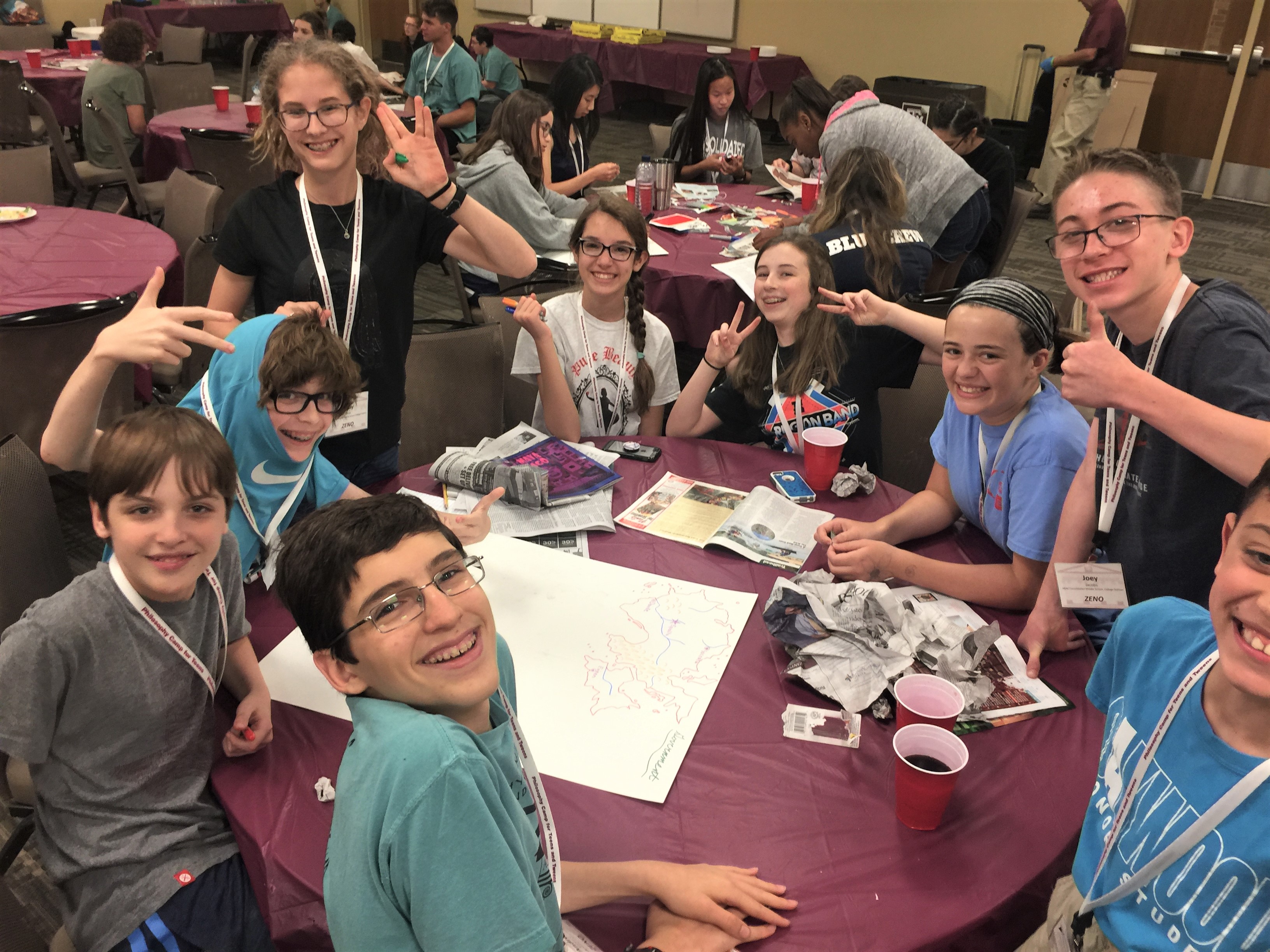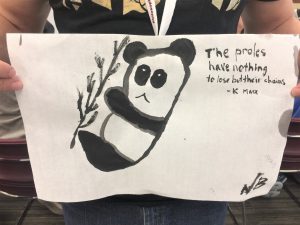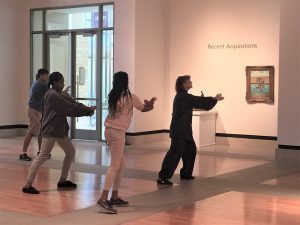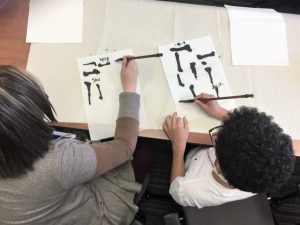
Our 2017 summer camp sought to push campers to think about how different “worlds” produce different philosophical traditions, as well as how philosophical systems generate particular beliefs about how a given “world” ought to be structured. Whether we were thinking about fictional or real worlds, or considering how different cultures and societies are worlds apart in how they understand “universal” values such as goodness, truth, friendship, or the divine, campers grappled with the tension between philosophical thought and practical world-building.
The first day of camp began with introductions and a discussion of Plato’s Allegory of the Cave. Though we had discussed this story and its significance as a way of understanding educational transformation last year, we felt it was again the best way of entering into the week’s theme. For what are the figures of the cave and the world outside of it if not two different worlds with two different values systems and epistemologies?
The next day, both high school and middle school discussed the question, “What can we know?” Middle schoolers worked on logic problems and discussed various fallacies, while the high school  campers discussed formal logic and paradoxes. For the last half of the day, all the campers came together for a group activity, led by Dr. Roger Sansom of the Department of Philosophy at TAMU, in which campers were asked to consider themselves scientists participating in an international conference on “phlogiston theory.” Using only the pieces of information currently “known” about the mystery substance phlogiston, campers were asked to work in groups with their colleagues in order to produce a theory that accounted for the phenomenon of combustion. As hypothesis after hypothesis was provided and either accepted or disproven, the conference as a whole began to develop a theory of phlogiston. The exercise served as both a mini-history lesson (phlogiston theory was once the preferred explanation for combustion) and an immersive illustration of the principles by which scientific knowledge is established. After the “conference,” campers discussed both the advantages and limitations of this knowledge-production process.
campers discussed formal logic and paradoxes. For the last half of the day, all the campers came together for a group activity, led by Dr. Roger Sansom of the Department of Philosophy at TAMU, in which campers were asked to consider themselves scientists participating in an international conference on “phlogiston theory.” Using only the pieces of information currently “known” about the mystery substance phlogiston, campers were asked to work in groups with their colleagues in order to produce a theory that accounted for the phenomenon of combustion. As hypothesis after hypothesis was provided and either accepted or disproven, the conference as a whole began to develop a theory of phlogiston. The exercise served as both a mini-history lesson (phlogiston theory was once the preferred explanation for combustion) and an immersive illustration of the principles by which scientific knowledge is established. After the “conference,” campers discussed both the advantages and limitations of this knowledge-production process.
The second day of camp ended with an introduction to the philosophy of religion, which was the overall theme for Wednesday as well. The high schoolers considered the question, “What is our relationship to the divine?” through Kierkegaard’s retelling of Abraham’s sacrifice of Isaac. Claire Katz and Dan Conway, leading this section, asked the campers to consider the differences between Christian and Hebrew approaches to this story, raising questions of how two different religious traditions reading the same text can come to different conclusions. At the same time, middle schoolers read Plato’s Euthyphro and thought about questions of goodness as it relates to divinity.
Both groups of campers were able to visit the Cushing Memorial Library and Archives where they were able to look at several different religious texts, including a 14th century “Book of Hours,” an illustrated devotional popular in the middle ages which provided prayers for every hour of the day, and a highly decorative, limited-edition Bible from the 1990’s. Campers learned about how these books were made and used by the people who would have owned them, and in response to seeing these objects, campers generated a variety of really interesting questions and insights. Of foremost concern was whether it was ethical for religious objects like Bibles and prayer books to be so expensive that the average worshiper could not afford to own them. It was suggested that, unlike religious frescoes, these objects were intended to be used, and so it wasn’t right for them to be made so lavishly and, by extension, expensively. One camper, however, suggested that made religious objects beautiful was part of one’s demonstration of devotion and love for the divine. After this discussion, campers were able to browse through Cushing’s “Worlds Imagined” Exhibition, which seemed to be a highlight of the week.
 On Thursday, both groups of campers spent the day immersed in Chinese philosophy and culture, both participating in traditional Chinese crafts and culture while also discussing how these are determined by Confucian and Daoist philosophy. Students heard Chinese music, practiced both Chinese calligraphy and brush painting, and even practiced Tai Chi in the J. Wayne Stark Galleries at the Memorial Student Center.
On Thursday, both groups of campers spent the day immersed in Chinese philosophy and culture, both participating in traditional Chinese crafts and culture while also discussing how these are determined by Confucian and Daoist philosophy. Students heard Chinese music, practiced both Chinese calligraphy and brush painting, and even practiced Tai Chi in the J. Wayne Stark Galleries at the Memorial Student Center.
Friday, after short discussions of gender (high school) and friendship (middle school) we had our traditional end-of-week party. Campers got to eat  pizza and cake and chat with the friends they’d made over the course of the week. They were also given a variety of craft materials and asked to construct a visual representation of their ideal philosophical world. The directions here were purposely left vague in order to encourage the kids to be as creative as they liked. After all the groups were finished, each group presented their philosophical world to the camp as a whole. The diverse, inventive, and deeply humorous outcomes can’t all be collected here, but each philosophical world presented demonstrated thoughtfulness, idealism, and a commitment to justice that was both brave and compassionate. Many of the counselors cried (both from laughter and because they were so touching) during these presentations, and, just as with last year, it wasn’t clear who benefited more from the camp–the kids or us.
pizza and cake and chat with the friends they’d made over the course of the week. They were also given a variety of craft materials and asked to construct a visual representation of their ideal philosophical world. The directions here were purposely left vague in order to encourage the kids to be as creative as they liked. After all the groups were finished, each group presented their philosophical world to the camp as a whole. The diverse, inventive, and deeply humorous outcomes can’t all be collected here, but each philosophical world presented demonstrated thoughtfulness, idealism, and a commitment to justice that was both brave and compassionate. Many of the counselors cried (both from laughter and because they were so touching) during these presentations, and, just as with last year, it wasn’t clear who benefited more from the camp–the kids or us.